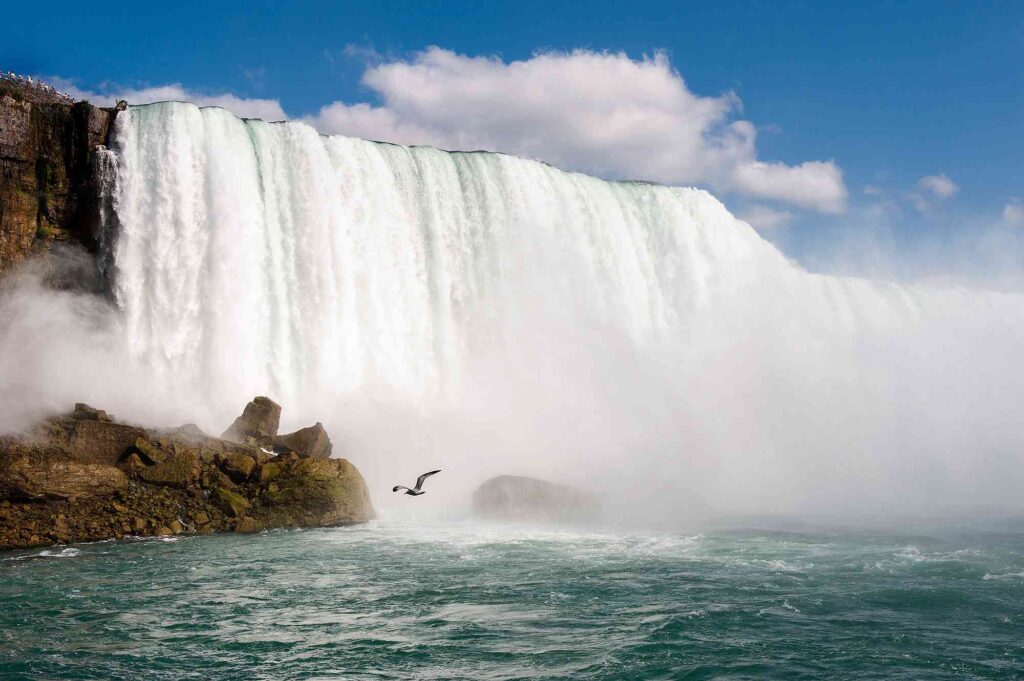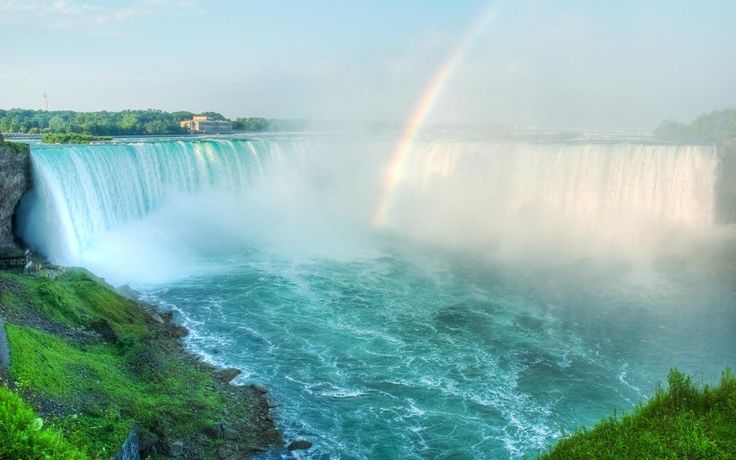Over 3.2 million liters of water cascade over Niagara Falls every second—enough to fill 1.3 Olympic pools in the blink of an eye. Yet, as visitor numbers surged by 18% in 2023, a pressing question looms: Can this natural wonder withstand the dual pressures of climate change and mass tourism?
The Unrelenting Power of Nature
A Hydrological Giant
Niagara Falls isn’t just a tourist attraction; it’s a geological workhorse. The falls split into three sections:
- Horseshoe Falls (Canada): 670 meters wide, 57 meters drop.
- American Falls (USA): 323 meters wide, 21-34 meters drop.
- Bridal Veil Falls (USA): The smallest, often overshadowed but equally fierce.
The combined flow rate averages 3,160 tons per second, though winter reduces it to 1,416 tons to minimize ice damage. Hydroelectric plants divert up to 75% of the Niagara River’s flow at night—a delicate balance between energy needs and preserving the falls’ majesty.
Table 1: Niagara Falls By the Numbers
| Metric | Horseshoe Falls | American Falls |
|---|---|---|
| Width | 670 m | 323 m |
| Height | 57 m | 21–34 m |
| Avg. Flow Rate (Day) | 2,800 m³/s | 360 m³/s |
| Annual Visitors | 14M (2023) | 8M (2023) |
Engineering Marvels and Historical Risks
Taming the Torrent
In 1848, the falls nearly ran dry due to an ice jam—a rare event that exposed its rocky base. Engineers later intervened to prevent erosion:
- 1969: The American Falls were dewatered for geological studies.
- 2022: A $140M reinforcement project stabilized Canada’s Table Rock.
The nearby Niagara Falls Suspension Bridge (1855), designed by John Roebling of Brooklyn Bridge fame, symbolizes early attempts to harness the falls’ power. Its replacement, the Whirlpool Rapids Bridge, now handles 3,000 vehicles daily.
List: Key Historical Milestones
- 1678: French explorer Louis Hennepin documents the falls.
- 1895: First hydroelectric plant opens, powering Buffalo.
- 1911: Niagara Falls State Park becomes the oldest US state park.
- 2020: Canada bans nighttime illumination to protect ecosystems.
Tourism Boom and Environmental Strain
The Double-Edged Sword
Niagara welcomed 22 million visitors in 2023, a post-pandemic rebound. But overcrowding strains infrastructure:
- Maid of the Mist boats now run on electric engines, cutting emissions by 80%.
- 2023 saw 12 rescues at Devil’s Hole Rapids, up from 7 in 2022.
Local governments face dilemmas. Ontario’s Greenbelt Act protects 810,000 hectares, yet illegal parking near the falls increased by 23% last summer.
Table 2: Tourism Impact (2023)
| Statistic | Canada Side | USA Side |
|---|---|---|
| Visitors | 14M | 8M |
| Hotel Occupancy | 89% | 78% |
| Avg. Spend per Tourist | $245/day | $180/day |
| Carbon Footprint | 1.2M tons CO2 | 0.8M tons CO2 |
Climate Change: A Looming Threat
Shifting Patterns
Warmer winters disrupt ice formation, critical for controlling erosion. A 2024 University of Waterloo study predicts:
- 15% reduction in annual flow by 2050 due to erratic precipitation.
- Increased rockfalls from thaw-freeze cycles, risking visitor safety.
Ontario’s Ministry of Heritage warns that iconic views like Terrapin Point may become unstable without $300M in reinforcements.
FAQ: What Visitors Need to Know
Q: When is the best time to visit Niagara Falls?
A: June–September offers boat tours, but winter’s ice bridges (rare since 2019) are magical.
Q: How much does it cost to visit?
A: Entry to parks is free, but attractions like Journey Behind the Falls cost 25CAD/25CAD/19 USD.
Q: Can you swim in the falls?
A: Illegal and lethal. The last stunt in 2003 ended in a $23,000 fine.
Q: Are the falls lit year-round?
A: Nightly illumination (until 10 PM) paused in 2020 for wildlife but resumed in 2023 with LED lights.
Q: How old is Niagara Falls?
A: Approximately 12,000 years, formed after the last Ice Age.
Hidden Keywords Block
keywords: Niagara Falls tourism, water flow rate, hydroelectric power, climate impact, visitor statistics, historical landmarks, erosion control
LSI: geological formation, ice bridges, sustainable tourism, rockfall risks, electric boats
НЧ-запросы: best time to visit Niagara Falls, cost of Maid of the Mist, Niagara Falls height, is Niagara Falls man-made, Niagara Falls at night
-
Niagara Falls Wildlife: Survival at the Edge of Thunder
Beneath the roar of 3,160 tons of cascading water per second, a hidden world thrives. Over 250 bird species, 50+ […]


